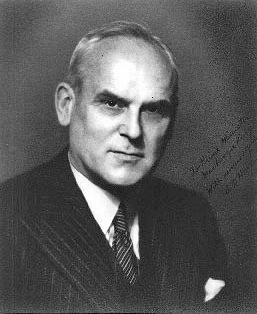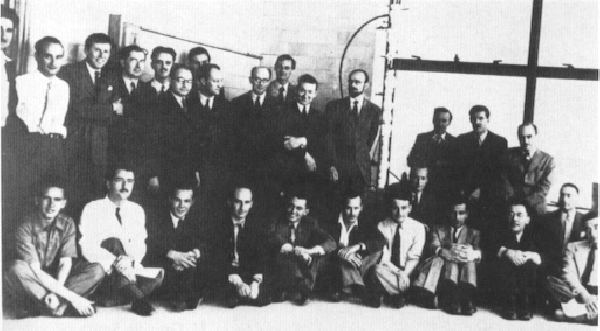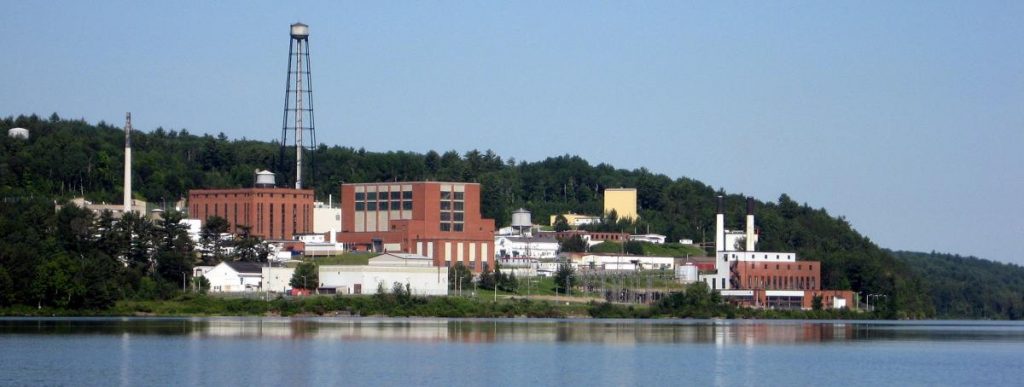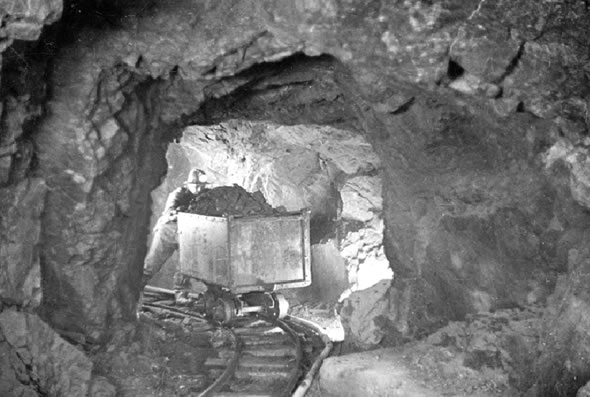Often overlooked, Canada played an important role in the Manhattan Project, especially during the early stages of research and development. Canada was also crucial for another reason: its Northwest Territories provided a rich source of raw uranium needed to produce the bomb’s critical mass.
Eldorado Mine
In May 1930, Canadian prospector Gilbert Labine discovered radium and uranium deposits at Port Radium in Canada’s Northwest Territories while exploring a nearby island on Great Bear Lake. Labine immediately staked his claim and established the Eldorado Mining Company to extract and refine the rich radium deposits, which traded at an extremely high-value because of its use in cancer treatments. For much of the 1930s, uranium was simply a by-product of the refining process and the Eldorado Mining Company had little use for it. When radium prices dropped due to foreign competition, operations slowed down and by June 1940 the mine had closed and was allowed to flood.
The discovery of nuclear fission in December 1938 led to a worldwide rush for uranium, and in 1942 the Eldorado mine was reopened to supply the United States Government with the uranium needed for the atomic bomb. From 1942 until 1945, workers mined hundreds of tons of uranium ore and shipped them across the country to Port Hope, where the ore was refined and later delivered to Los Alamos to be used in the world’s first atomic bomb.
A Joint Effort: Britain and Canada

By the spring of 1942, British scientists had made significant progress on determining the feasibility of an atomic bomb. The MAUD Report, released in July 1941, estimated the quantity of uranium-235 needed to produce an atomic explosion and provided specific plans for producing a bomb. British physicists had also proposed several viable methods for the separation of U-235 and the production of plutonium.
As researchers neared the production phase, British officials proposed that the secret Tube Alloys project at Cambridge’s Cavendish Laboratory be relocated to the United States. The advantages of this were obvious: Britain’s industrial resources and scientists were already committed to other war purposes, such as radar, and the work on the atomic bomb in the United States was already well-advanced. The German Luftwaffe had already proved its ability to devastate British factories and plants, making the decision to move the Project to the United States a safer alternative.
Despite initial cooperation, American scientists on the S-1 Committee felt that collaboration with the British was no longer necessary. James B. Conant, the Committee’s chairman, believed that sharing information on the project could jeopardize secrecy. Many of the senior members on the British team included refugees from countries that were occupied by the Germans, and U.S. officials thought that they might be persuaded to reveal information about the project if the Nazis placed pressure on their relatives in Europe.
With the United States hesitant to cooperate, the British government turned to Canada. In June 1942, Britain’s High Commissioner to Canada, Malcolm McDonald, met with Canada’s Minister of Munitions and Supply, Clarence Decatur “C.D.” Howe, to propose the establishment of a joint British-Canadian nuclear laboratory.
At first, Howe was wary. There were still many unanswered questions surrounding the development of a full-scale nuclear reactor and it seemed doubtful that one could be completed before the end of the war. In addition, the project would commit Canada to the expenditure of millions of dollars and divert scientists, equipment, and material from other vital war projects. Nonetheless, Howe believed that atomic energy would have a profound impact on society and the economy after the war, and the joint research effort would provide an opportunity for Canadian scientists to train in this field. In late August 1942, Howe gave the go ahead for the Montreal Laboratory with the simple words “Okay, let’s go.”
The Montréal Laboratory

The Montréal Laboratory in Quebec, Canada was established in late 1942 by the National Research Council of Canada (NRCC) to continue the nuclear research on the top-secret Tube Alloys project that was being conducted at Cavendish Laboratory in Cambridge, England. The first group of scientists arrived from England in December 1942. Initially, laboratory staff conducted their research at an old residence at 3470 Simpson Street belonging to McGill University. Three months later, a new, larger building was completed at the University of Montréal and the laboratory was moved.
Once relocated, the laboratory’s staff quickly grew to include over three hundred scientists, technicians, and engineers, of whom about half were Canadian. Scientists immediately began investigating the penetration of neutrons through the different kinds of materials that might comprise the core of the reactor, such as heavy water, graphite, and combinations of these with uranium and other materials.
At first, scientists made significant progress, especially regarding the feasibility of a reactor that would utilize natural uranium and heavy water. However, Montreal’s staff quickly became frustrated with the lack of collaboration from American scientists. They were also frustrated by the Labortory’s director, Hans von Halban, who was a poor administrator and did not work well with the National Research Council of Canada. American officials saw the French physicist as a security risk and were wary to work with him. By 1943, the proposed exchange of information between Montréal Laboratory and American scientists had become much more restricted and MED officials had stopped sending copies of their scientific reports.
On August 17, 1943, British Prime Minister Winston Churchill met with American President Roosevelt in Québec to discuss the unsatisfactory state of British-American collaboration in nuclear energy research, including the work of the Montréal Laboratory. After some prodding, Roosevelt agreed that arrangements should be made “to ensure full and effective collaboration between the two countries in bringing the project to fruition”. A “Combined Policy Committee” under the chairmanship of Henry Stimson was established to work out the basis for implementing this agreement.
On April 13, 1944, the Combined Policy Committee decided to proceed with the design and construction of a heavy water moderated nuclear reactor in Canada. It was agreed that there would be a full exchange of information relevant to the design of the reactor and the extraction of the plutonium it produced. However, General Leslie Groves insisted that Halban and the other scientists who were not British subjects leave the project, and the English Physicist, John Cockroft, would be Director of the laboratory.
Chalk River Nuclear Laboratories

The National Research Council of Canada selected Chalk River, Ontario as the site for one of the world’s first heavy water nuclear reactors. Construction on the reactor, known as the Zero Energy Experimental Pile or ZEEP, began in August 1944. The ZEEP reactor was designed to use natural (unenriched) uranium, which allowed physicists to bypass the complex and expensive process of uranium enrichement.
The ZEEP Reactor went critical at 3:45pm on September 5, 1945 and became the first operational nuclear reactor outside the United States. It continued to be used for basic research until 1970. The ZEEP reactor was decommissioned in 1973 and dismantled in 1997. The ZEEP design served as the basis for a number of other nuclear reactors at Chalk River, including the NRX, NRU, and CANDU reactors.




